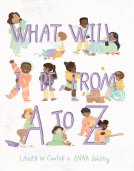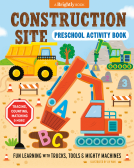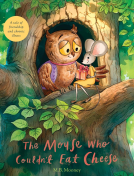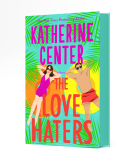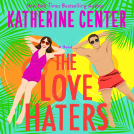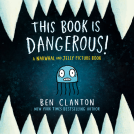
Super STEAM: 10 Fun Experiments About Art and Music
by Scientific American Editors
This title was previously available on NetGalley and is now archived.
Send NetGalley books directly to your Kindle or Kindle app
1
To read on a Kindle or Kindle app, please add kindle@netgalley.com as an approved email address to receive files in your Amazon account. Click here for step-by-step instructions.
2
Also find your Kindle email address within your Amazon account, and enter it here.
Pub Date Aug 01 2023 | Archive Date Nov 30 2023
Rosen Publishing Group | Scientific American Educational Publishing
Talking about this book? Use #SuperSTEAM10FunExperimentsAboutArtandMusic #NetGalley. More hashtag tips!
Description
Art and music are often seen as separate from science, but there is a lot to learn when they are considered together: STEAM! Young scientists investigate chromatography, photography, tone, and how music is made with different objects in this super-fun book of experiments, presented by Scientific American. Each project is preceded by a Background section that explains the scientific concept that the experiment or activity is exploring. The clear instructions guide readers through the rest of the scientific method through gathering materials, setting up, performing the experiment, and examining the results.
Available Editions
| EDITION | Ebook |
| ISBN | 9781725349285 |
| PRICE | $35.95 (USD) |
| PAGES | 64 |
Links
Available on NetGalley
Featured Reviews
Super STEAM: 10 Fun Experiments About Art and Music by Scientific American Editors
Among these 10 experiments, children can easily perform these at home. The experiments include music, art and sciences related topics. All with clear guidance.
After raising out the question, I.e. what do you want to know, then the book will provide the background of the theory, materials required, key concepts, preparation, procedures, observation and result.
This book is introducing STEAM to children from a fun and easy perspective. In the future, you can carry out your own experiment!
 Vicky Z, Educator
Vicky Z, Educator
There are some good science fair project ideas in here. this would be a good resource for an adult to guide a child. It is a bit wordy, but would help parents. It gives the timeframe the project should take, key concepts, and background information. Also, the materials, preparation and procedures to do the experiments. Finally, there are extra ideas, how to observe the project, and expected results. My favorite part was directions for how to clean up!
 Monica L, Reviewer
Monica L, Reviewer
This is a really clever concept for a book - fun, hands-on experiments that explain scientific concepts related to art and music. If I could describe this book in one word, it would be detailed. There is a lot of text, with each experiment getting a good 5 pages of explanation from start to finish. I think that is the biggest pro and con of this book.
Pros - The experiments follow the scientific method. There is a lot of background information provided to give context to each experiment. There are "Extra" opportunities to take the experiment further if students are engaged. There is even guidance for safe clean up!
Cons - Some of the materials lists are really lengthy, in part due to the amount of detail provided, but they are largely things most families would have available at home. This seems like a one-and-done book, so it may be better as a library loan.
Thank you to Rosen Publishing Group for gifting me with an ARC to review. All opinions are my own.
A fun book for kids looking for science ideas. All super cute and simple things their parents'/other grownups have likely done before. Great for the classroom.
 John L, Reviewer
John L, Reviewer
Definitely, and most usefully, putting the A for Arts into STEM, this gives us ten home-friendly projects, with a more cultural bent than the usual DIY science experiment. First off we're testing wet and dry and making a kind of fresco mark from a cornstarch base – but worry not, we get all the chemistry of how the ancients did it. It's just that using foodstuffs makes it a bit less toxic. Then we're marbling cards, again in the kitchen but with products found in the bathroom too, checking photos for how they stick to the golden mean and the rule of thirds, and delving into chromatography. We do return to colours and suchlike, but not before branching out into musical pitch for two snappy surveys.
All in all I found this a bit too fond of working with fabric and colouring thereof, but this is still worth considering. The studies are well conveyed, with lists of requirements, time to expect to spend, and enough science discussed to justify their inclusion each time. The steps are put out nicely, with scope for us to go a touch further and look perhaps at a science fair entry. To my mind it didn't seem to exclude anyone through cost or the sourcing of parts, and certainly any school science club should be able to pitch in and make these a doddle. They should be fine for a brave parent to encourage at home, too, which is where this will shine. Get your kid to volunteer to work through this and you have a brainbox in the offing.
Readers who liked this book also liked:
Jodi Picoult; Jennifer Finney Boylan
General Fiction (Adult), Literary Fiction, Women's Fiction

